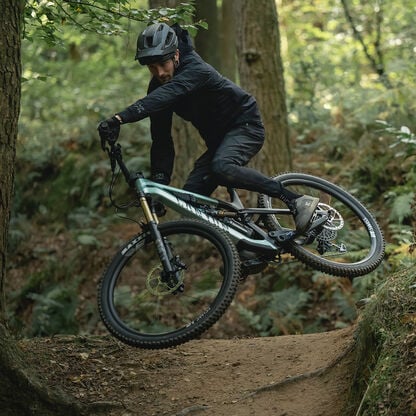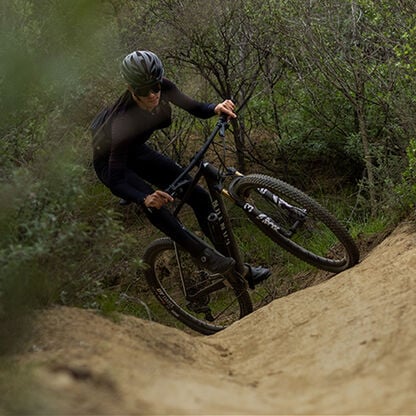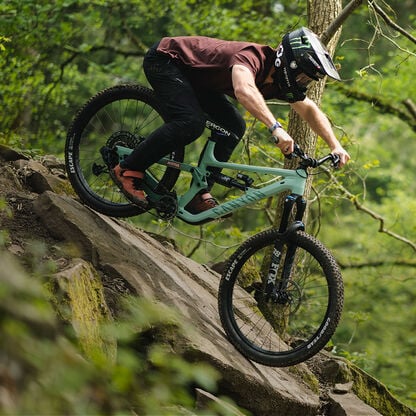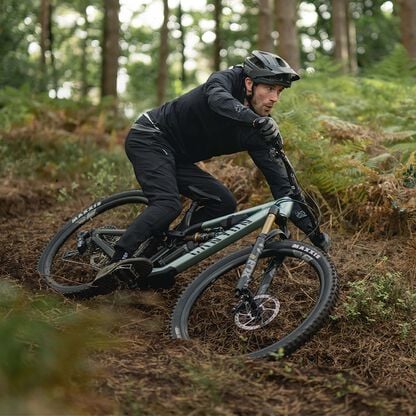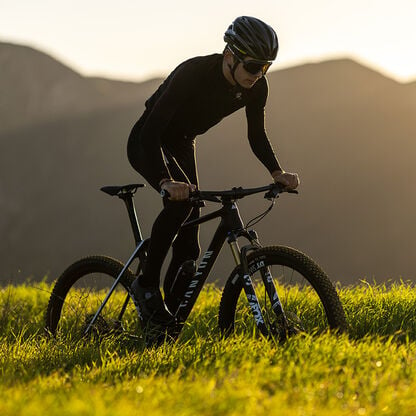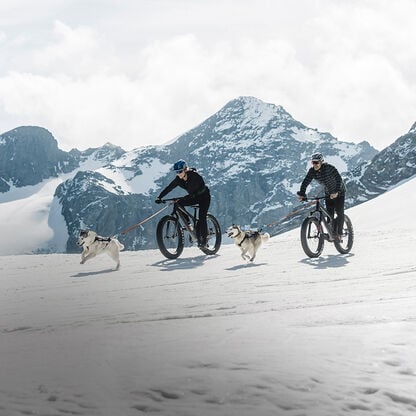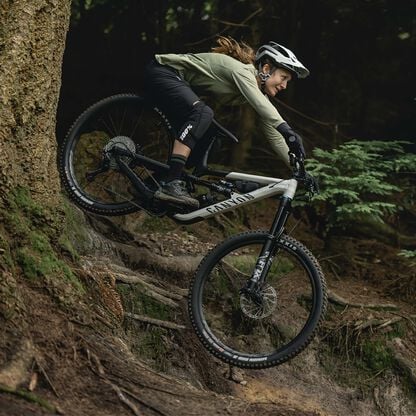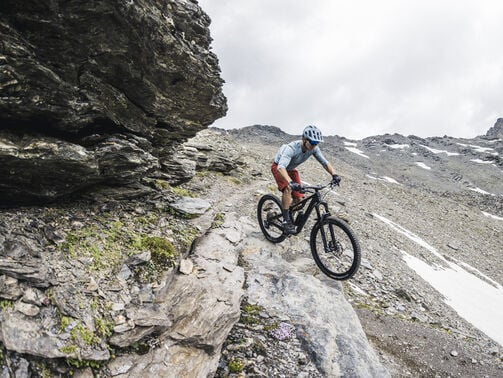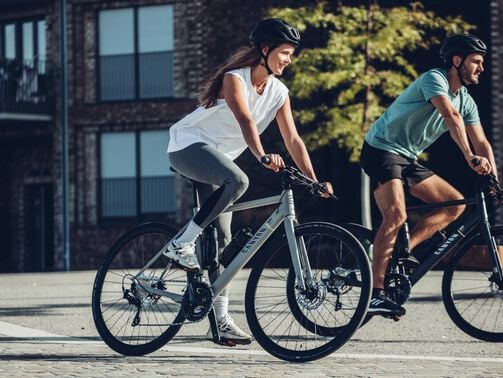Mountain bike or hybrid bike - Which suits me better?
The following article explains the most important differences between hybrid bikes and mountain bikes, which will make your purchase decision much easier.

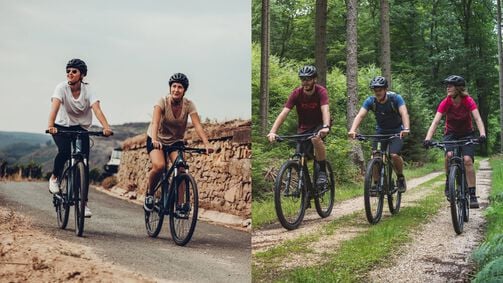
Can't decide whether you need a mountain bike or a hybrid bike?
Here we’ll explain the most important differences between a hybrid bike and a mountain bike, which will make your buying decision much easier.
The Mountain Bike
The term mountain bike covers a wide range of different bikes, especially for sporty off-road use. The range extends from simply equipped hardtails to competition-ready full-suspension bikes. Within the world of mountain biking, you'll find the following ridestyles: enduro, downhill MTBs, dirt, or fat bikes.
In contrast to a hybrid bike, a mountain bike can be ridden almost anywhere. However, MTBs are only really fun when you get off paved roads, for example, on forest and gravel paths. MTBs are really in their element when they go on the road less travelled.
Their knobby tyres provide excellent grip off the road but have a slightly higher rolling resistance on asphalt. 27.5 inch (650b) or 29-inch wheel sizes have become commonplace on MTBs.
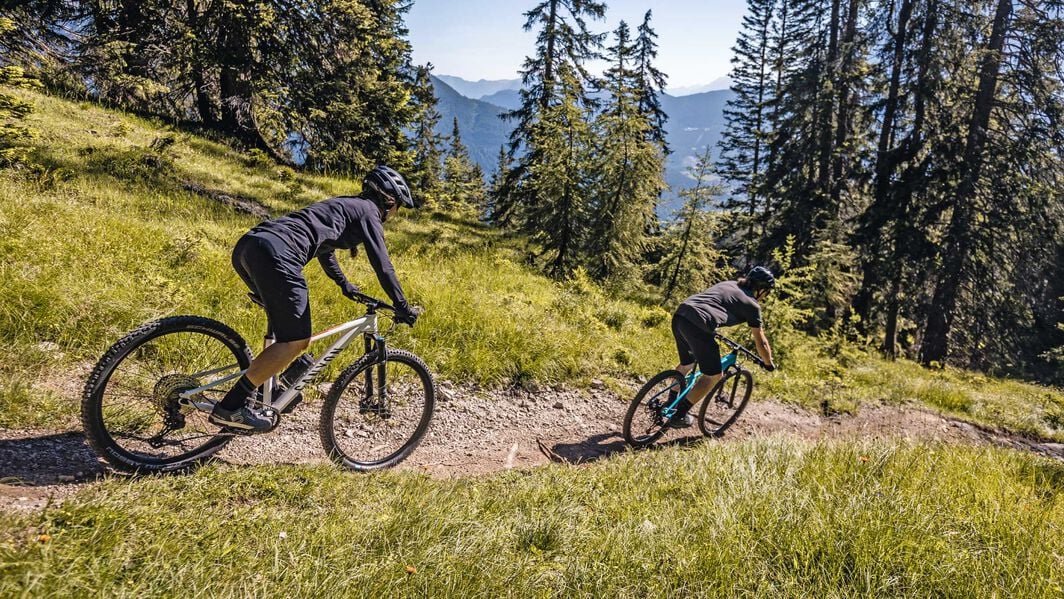
MTB Gearing
An essential component of the mountain bike is the gearing. A MTB will allow you to master steep climbs as well as fast-paced descents. To do this efficiently requires the right gear ratio. MTB setups typically include a single, small front chainring with a wide-ranging rear cassette to ensure you have the right gears for the trail ahead.
1x12 gearing has become common using one chainring at the front and twelve sprockets at the rear. Such a wide range means there’s always an option regardless of whether you're riding up a steep trail or crushing a descent.
MTB Brakes
Hydraulic disc brakes are available on medium to high end mountain bikes. They ensure optimal stopping power even in dirt and wet conditions.
Less is more
Everything unnecessary is left off a mountain bike, as it only means extra weight, which makes climbs and bike handling more difficult. Therefore, you won't find mudguards, bike lights or luggage racks on our range of mountain bikes.
MTB riding position
The riding position on a mountain bike is determined by the frame geometry. It’s designed for acceleration and enables you to move around the bike as the gradient changes. The suspension fork and shock ensure optimal handling and comfort on rough terrain, even on fast-paced descents.
At home everywhere
Mountain bikes adapt easily to changing terrain. Whether on gravel, muddy forest paths or challenging trails - an MTB can do it all.
Whether a hardtail, full-suspension, or e-MTB, our range of mountain bikes ensure there’s something for you no matter where or how you ride.
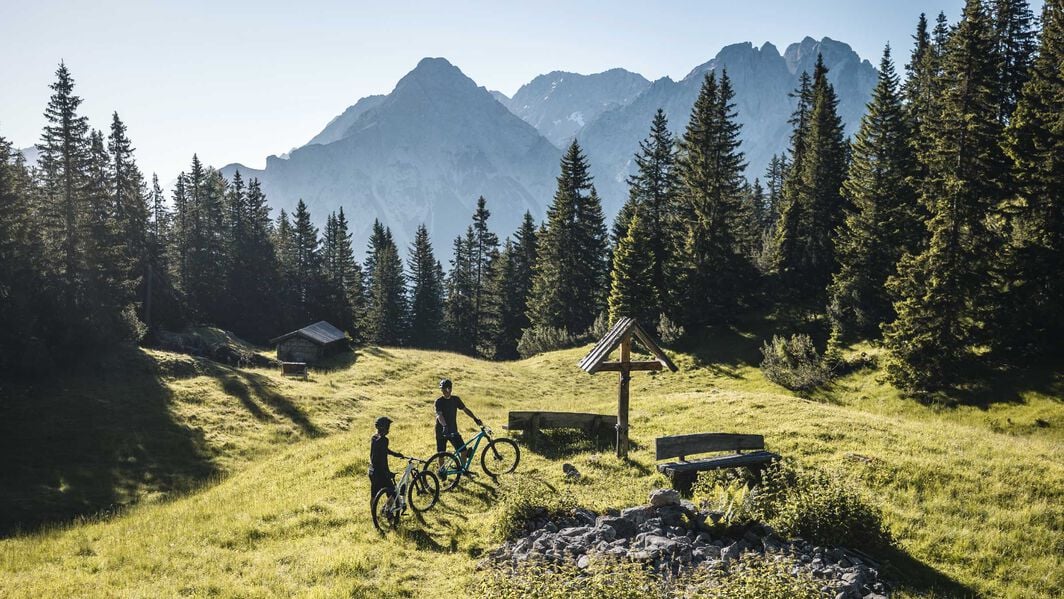
Mountain bike: the pros and cons at a glance
-
Rideable everywhere
-
Optimal off-road capability
-
Large choice (trail, enduro, downhill etc.)
-
More aggressive riding position, not quite suitable for everyday use
-
Not suitable for road traffic without lights
-
Higher rolling resistance on asphalt
The Hybrid Bike
If you are looking for a versatile bike, a hybrid bike is the best choice. A hybrid bike can be sporty and nippy, if necessary, but it is also suitable for shopping or longer tours. Hybrid bikes are very robust - so they can also cope well with larger loads. Hybrid bikes are comfortable city bikes but can also easily cope with gravel paths or forest trails. Challenging terrain and trails, on the other hand, should be reserved for MTBs.
The reason for this is the significantly narrower tyres compared to mountain bikes and different geometry. Most hybrid bikes have simple short-travel suspension forks at the front and no suspension elements at the rear.

Hybrid bike gearing
Hub gears can also be found, but due to a lack of sufficient gearing, they are only recommended for short and medium distances.
Hybrid bike brakes
High-quality hybrid bikes are usually equipped with hydraulic disc brakes. They are more reliable and at the same time easier to control.
Fully road legal
Unlike mountain bikes, hybrid bikes are equipped with mudguards, luggage racks, front lights and rear reflectors. A hybrid bike is suitable for everyday use and is fun not only on the road but also on light off-road terrain.
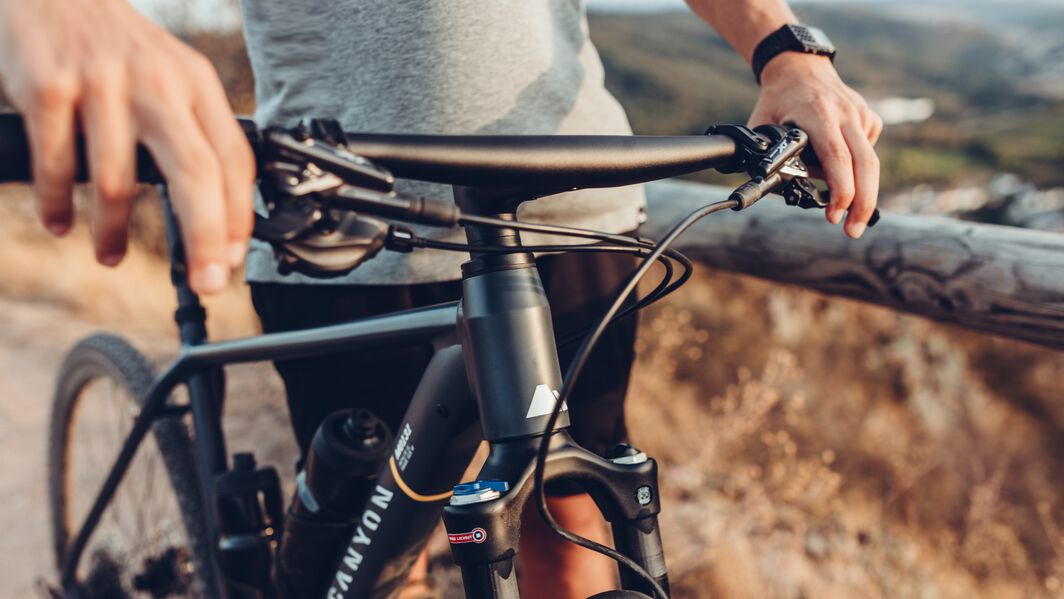
Hybrid Bike: Pros and Cons
-
Fully roadworthy
-
Ideal for city and touring (also dirt roads)
-
Good for everyday use (bikes lights, mudguards, stands)
-
Not suitable for mountains and rough terrain
-
Not suitable for sports use
-
Not as versatile as a mountain bike
Off-road specialist versus all-rounder - a comparison
Whether you will get more enjoyment from a mountain bike or a hybrid bike depends very much on your needs. A hybrid bike is equally suitable for easy terrain like asphalt and getting around town. An MTB, on the other hand, is the unbeaten champion for action-packed trails, mountains and gnarly downhills.
Weight: solid vs. light
Hybrid bikes (16 to 19 kg) almost always add weight, while mountain bikes (11 to 16 kg) are lighter. Depending on the materials used (aluminium or carbon) and the features, there are also outliers in both categories in one direction or the other.
Put simply, the weight has a big influence on the bike's handling. A heavier bike requires more power on climbs and is more cumbersome to handle. On the other hand, it is a bit faster on downhill sections. Don't underestimate the role of tyre tread, rims, and tyre pressure when it comes to the speed you can achieve.
Riding Position
The riding position also differs greatly. On a hybrid bike, you tend to sit more upright, which is comfortable and very good for everyday use. A mountain bike has a more dynamic, and forward-leaning seating position that is better for off-road use.
Aesthetics: inconspicuous vs. cool
Often, the design of mountain bikes is a bit more striking and eye-catching. This is why they are perceived as cooler, especially by many younger cyclists. The riding position alone makes an MTB look a bit sportier. A hybrid bike tends to be more understated on the outside, but it is usually the better choice for everyday use. And the range of bikes is now so huge that fans of both can find the right bike to suit their tastes.
Usefulness: suitable for everyday use vs. sporty
Another advantage of a hybrid bike is that it requires less maintenance. One reason is the mudguards, which protect both the bike and the rider from excessive dirt. In addition, the components of hybrid bikes are usually not as complex and maintenance-intensive.
Another advantage of a hybrid bike is that it requires less maintenance. One reason is the mudguards, which protect both the bike and the rider from excessive dirt. In addition, the components of hybrid bikes are usually not as complex and maintenance-intensive.
Summary: Hybrid bike vs. mountain bike
Each type of bike has its advantages and disadvantages. To ensure that you are satisfied with your choice for as long as possible, you should think carefully about how you will mainly be using the bike before buying it. If you mostly ride in the city and occasionally go on a tour, a hybrid bike is a good choice.
The sports fanatics among us who like to try out challenging trails, want to speed down a valley and rarely ride in the city are better off choosing a mountain bike. No matter which category you choose, at Canyon, you will find the right top-quality bike for every purpose and riding style, with a 30-day return policy.
Discover our Mountain Bikes
Did this article help?
Thank you for your feedback


